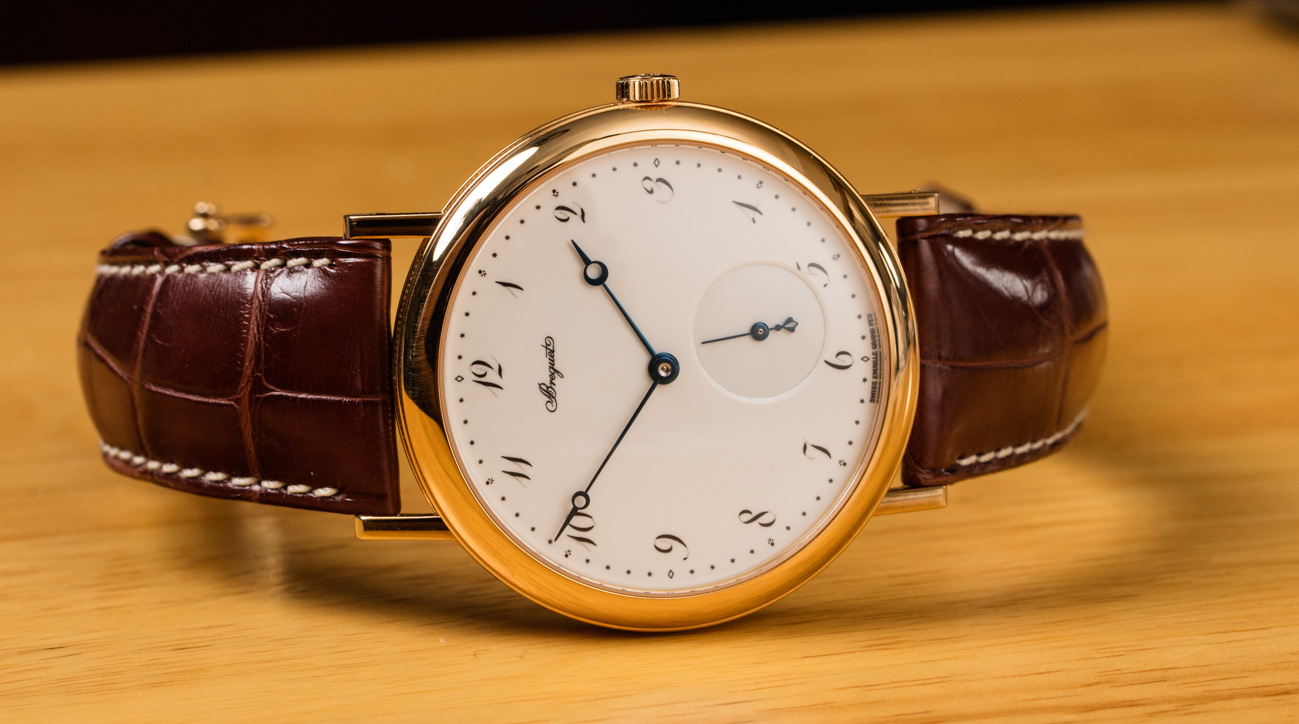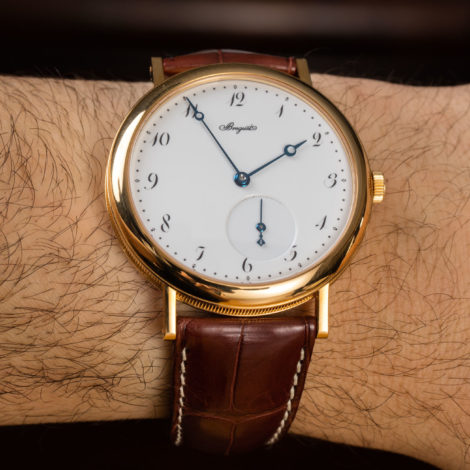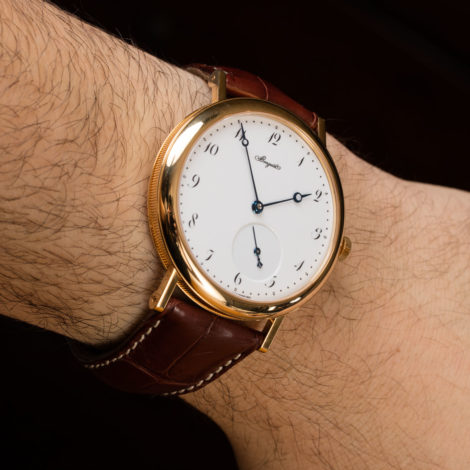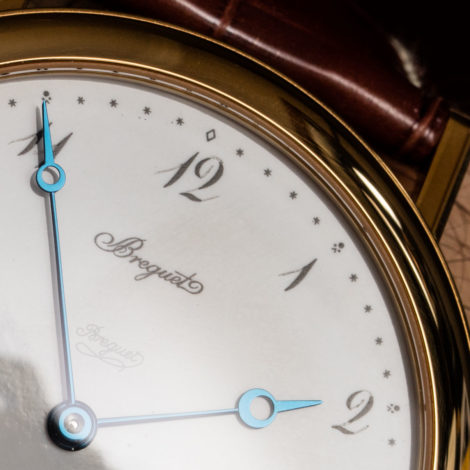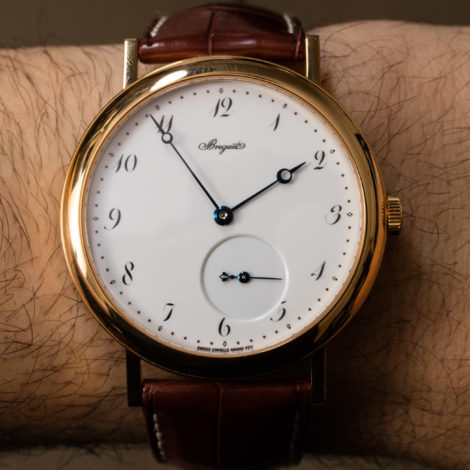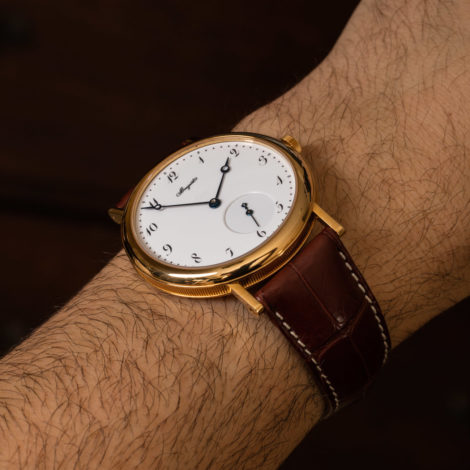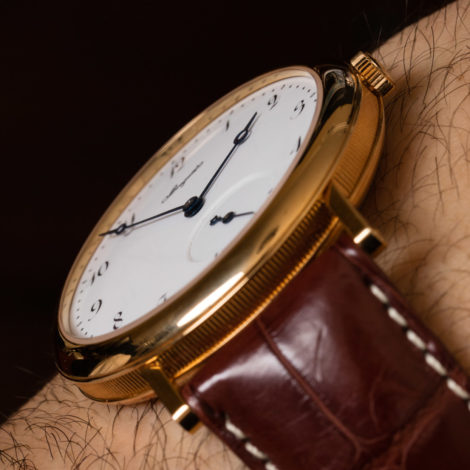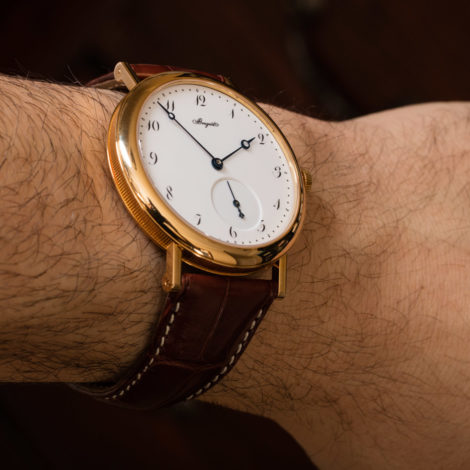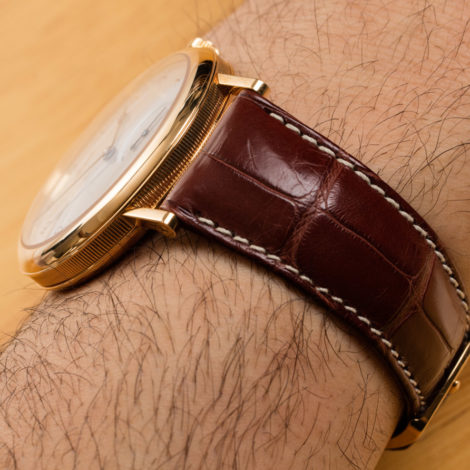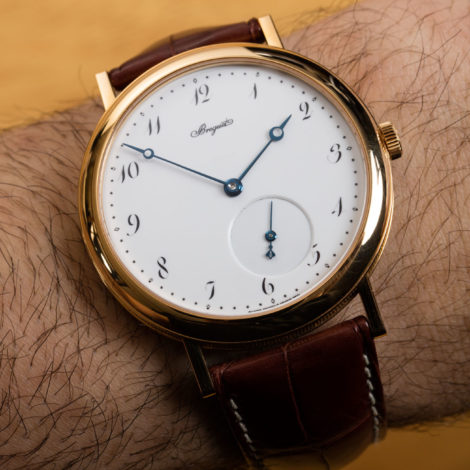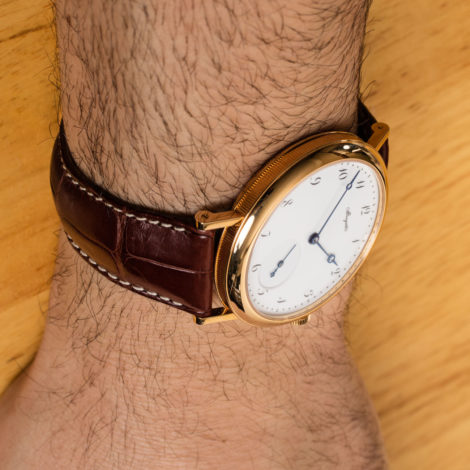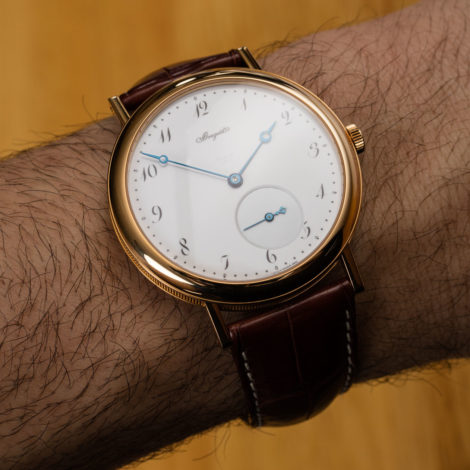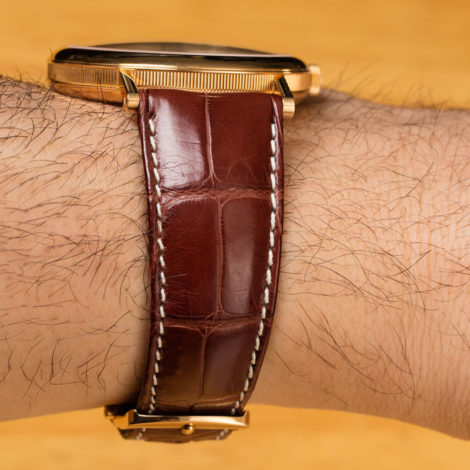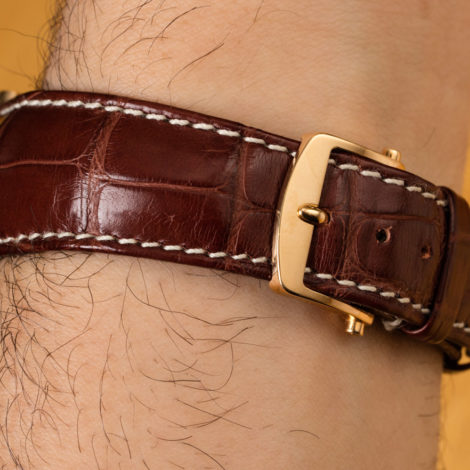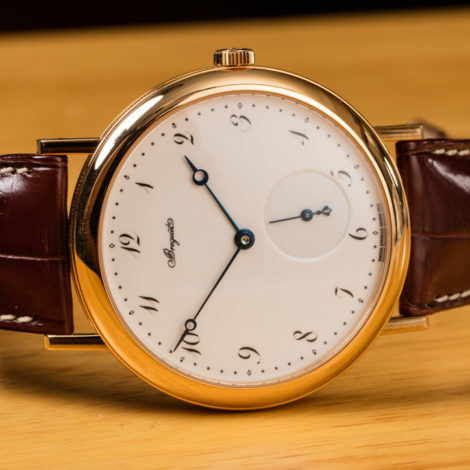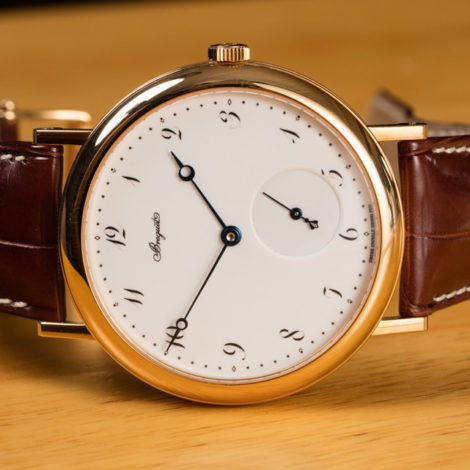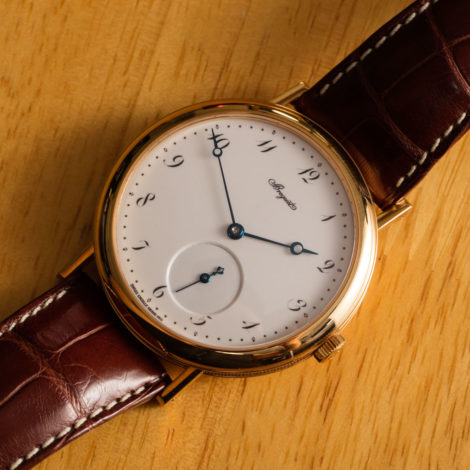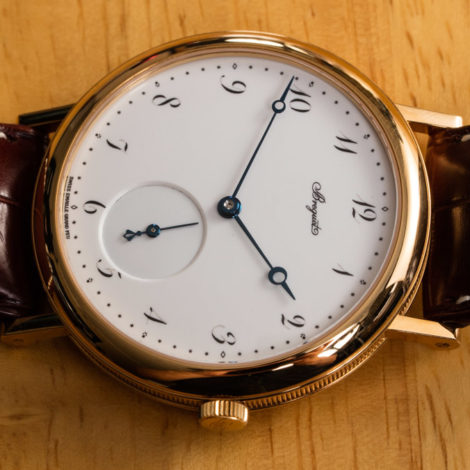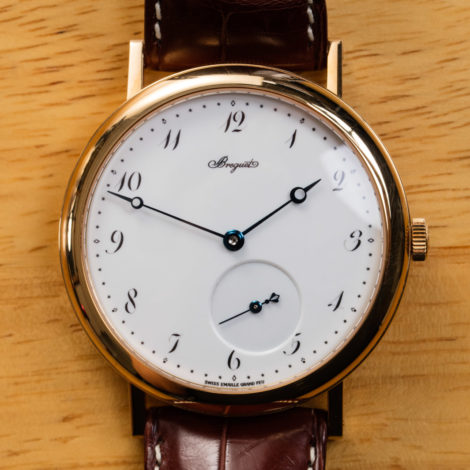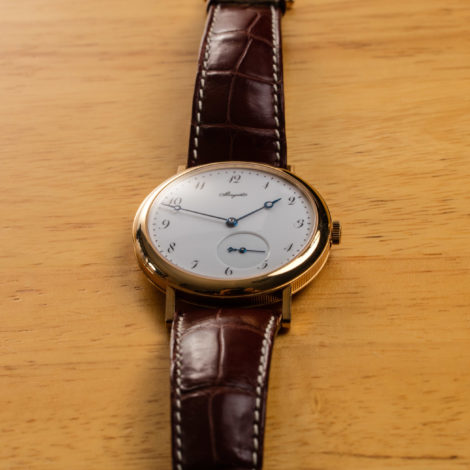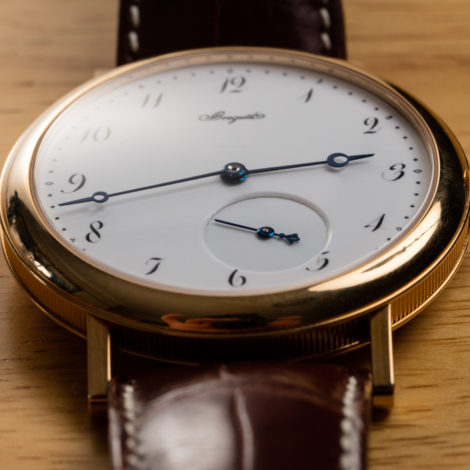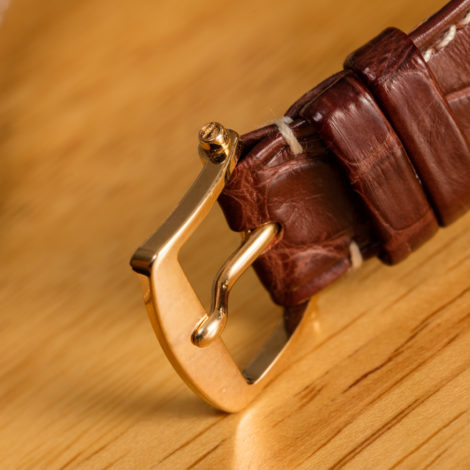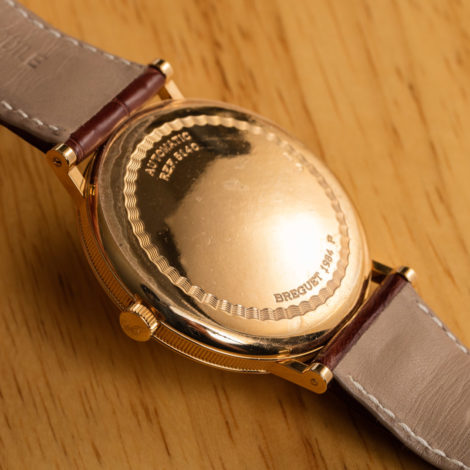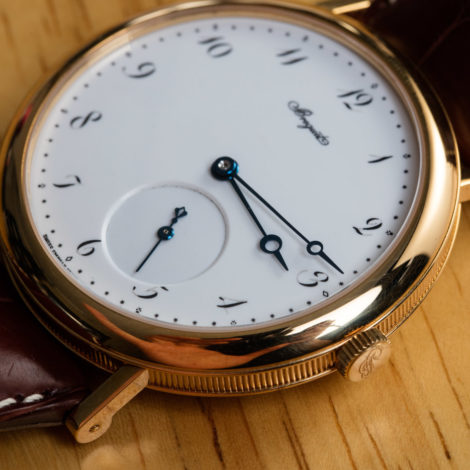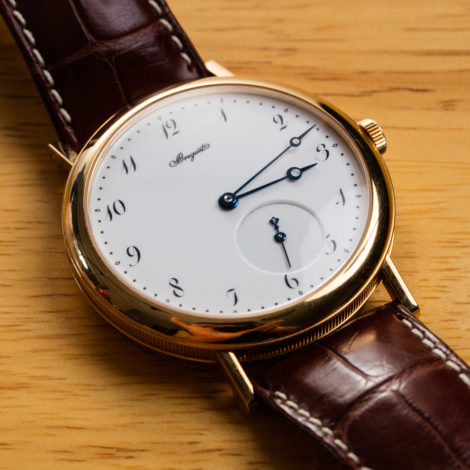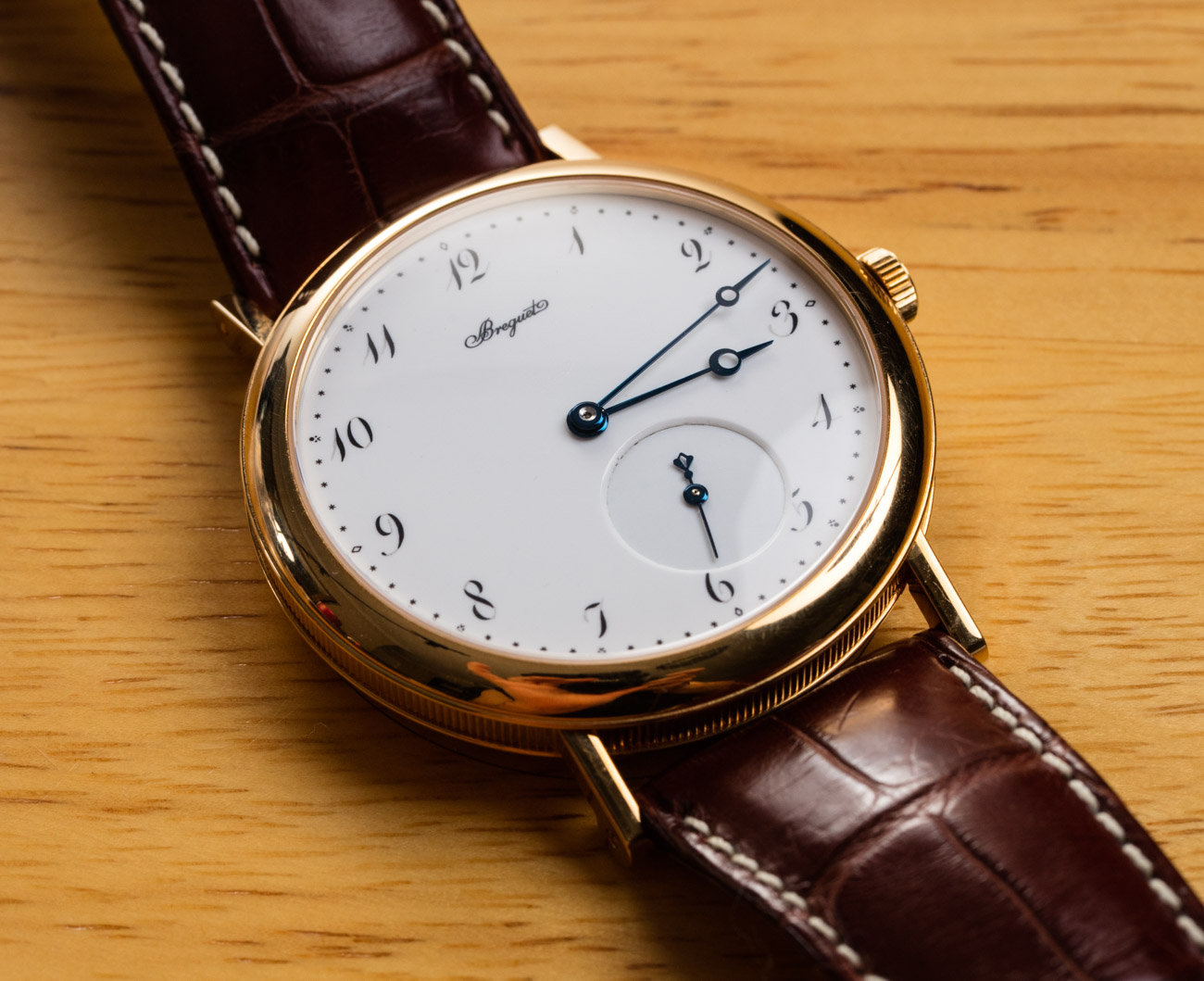
I’m rarely shy about my appreciation for truly historic watchmaker Breguet and today I talk about the reference 5140BA-29-9W6 Breguet Classique 5140 in 18k yellow gold with a white enamel dial. The jewel of Swatch Group’s prestige brands – Breguet has one of the most dynamic approaches to contemporary watchmaking around that includes a legitimate perpetuation of traditional craftsmanship and watchmaking techniques – with modern production processes and technology. Few brands feel concurrently as traditional and modern at the same time. The Classique 5140 – at least outwardly – is very much on the traditional side and makes for a lovely dress-style wrist watch.
Much can be said about Breguet’s history going back to the 18th century as well as the appeal of Mr. Abraham-Louis Breguet’s enduring efforts to make watchmaking both beautiful and practical. One of the most celebrated inventors of horological improvements – the (today) ritzy tourbillon mechanism is perhaps the mechanical invention Breguet is most well-known for. Today’s more expensive Breguet timepieces can be equipped with a number of tourbillon styles, but it is rather many of Breguet’s more simple timepieces which I think can be the most satisfying as a daily wear. The Classique 5140 family – with its clean time-only dial and in-house made automatic movement – certainly fits into that category.
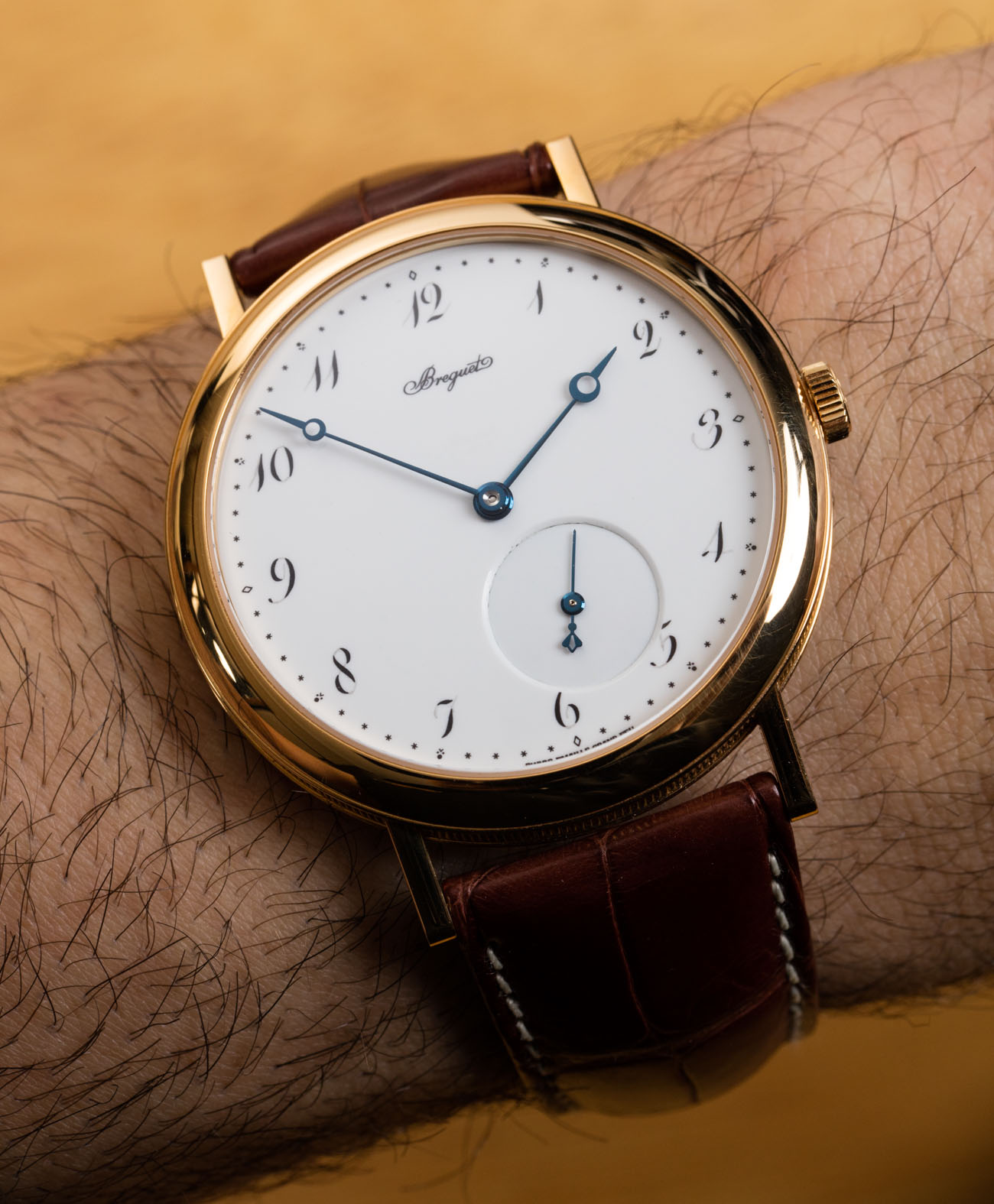
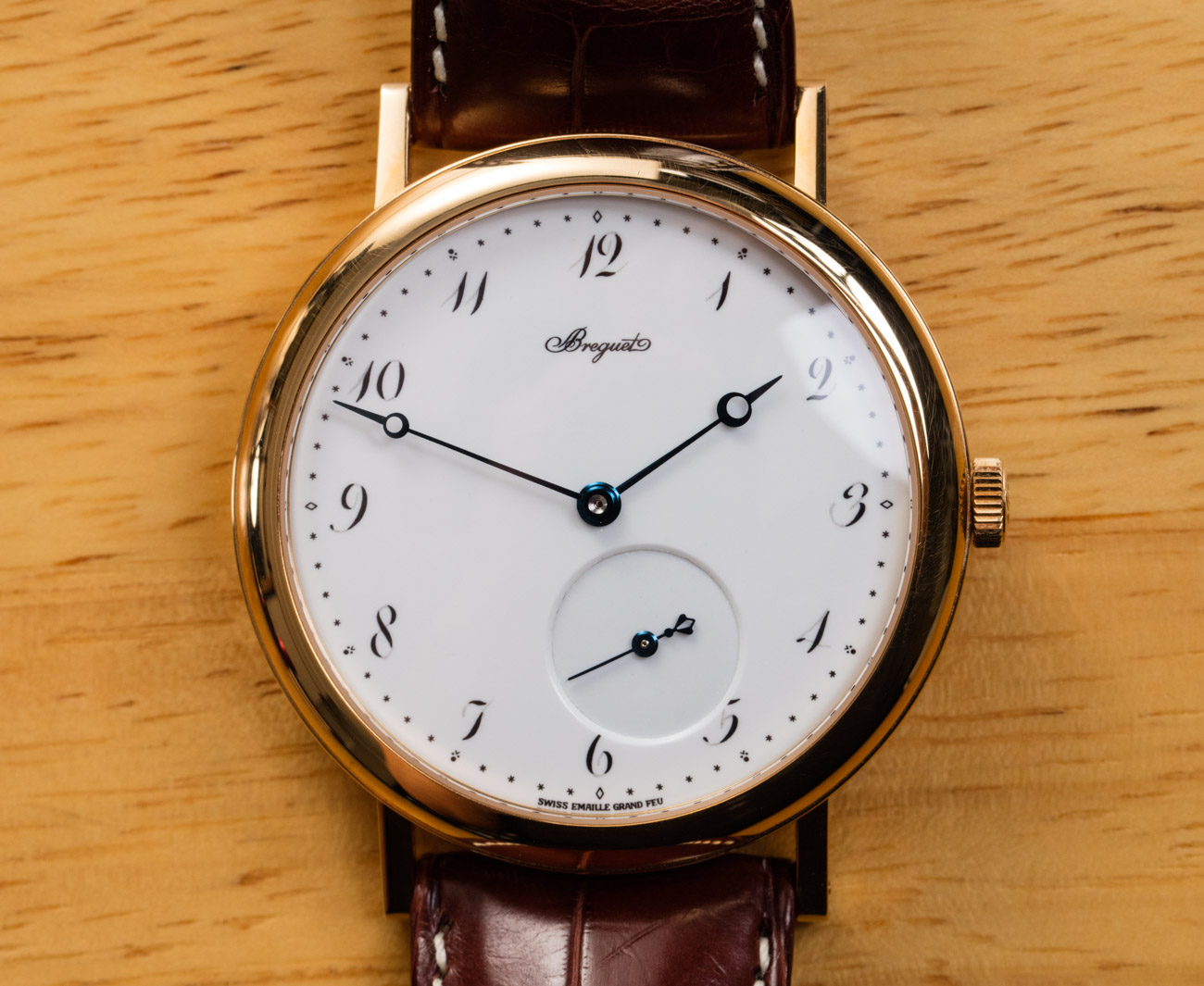
40mm wide and in 18k yellow gold, this Classique 5140 also has an authentic oven-baked enamel dial and flame-blued steel hands. The techniques used to produce these parts go back literally hundreds of years and very similar processes are used to produce them today. What I love about this watch aside from its inherent legibility and elegant looks, is that it truly feels like an antique made today. Often times I feel that modern “retro-inspired” watches may emulate traditional designs, but still very much feel like modern watches from a construction and materials standpoint. The Classique 5140 however benefits from having an “antique feel” even though it is a new timepiece. This is related to the careful finishing of the gold case, as well as the organic feel of the dial and hands which – with their tiny imperfections – feel more alive and rich with personality than something “perfect” that comes out of a big machine.
Let me quickly remark on the fact that Breguet also produces the more contemporary Classique 7147 that is very similar to the Classique 5140. The models have slightly different cases and dials, although they share the same case diameter as well as movement. Breguet didn’t want to have too much overlap with the two models so while the Classique 5140 is available in yellow gold, the similar version with the enamel dial in the Classique 7147 is available in 18k rose gold (both models have 18k white gold versions). The 7147 has a thinner case which is 6.10mm thick versus the slightly thicker 10.8mm thickness of the 5140’s case. Both cases are 40mm wide and water resistant to 30 meters.
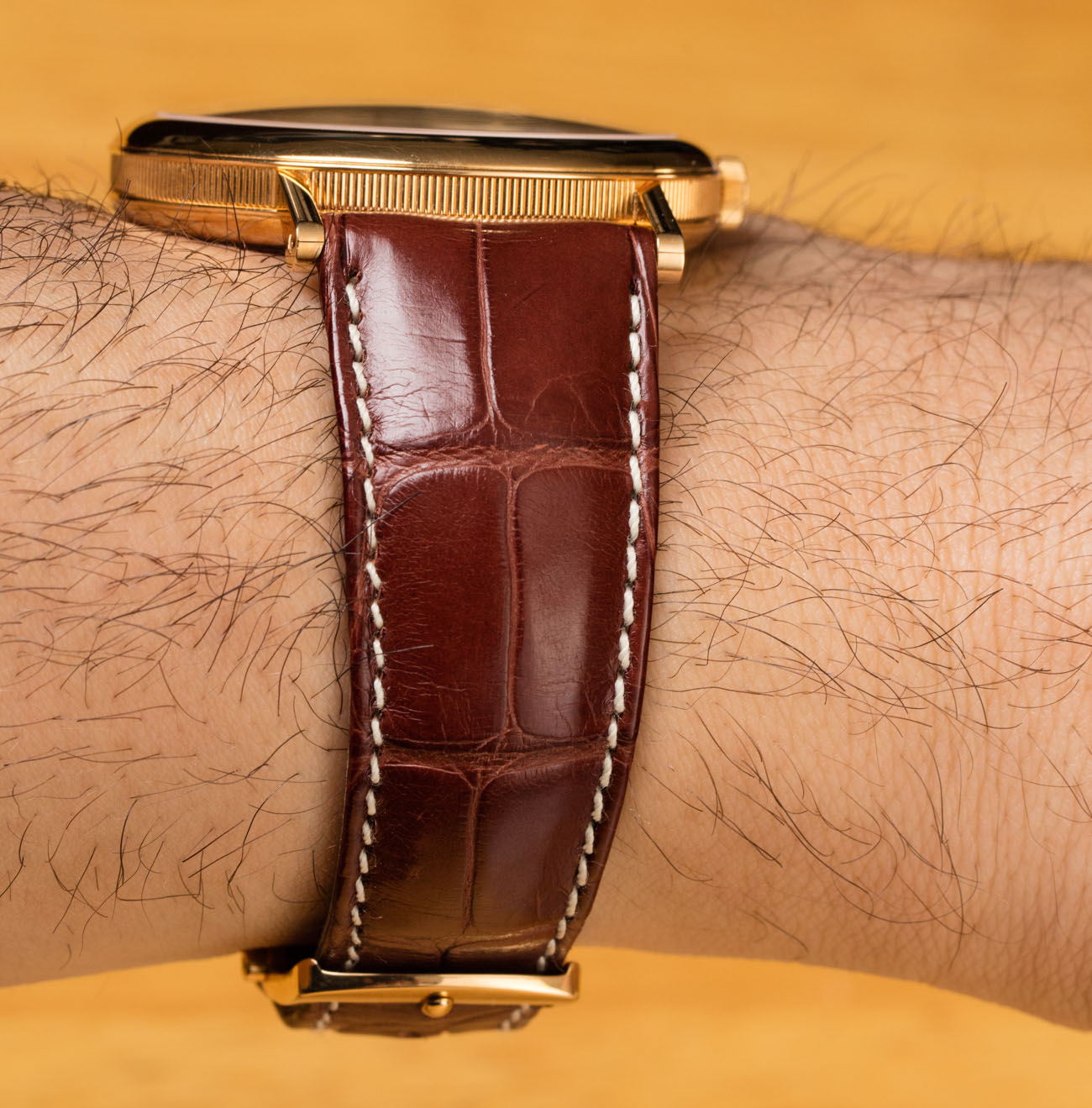
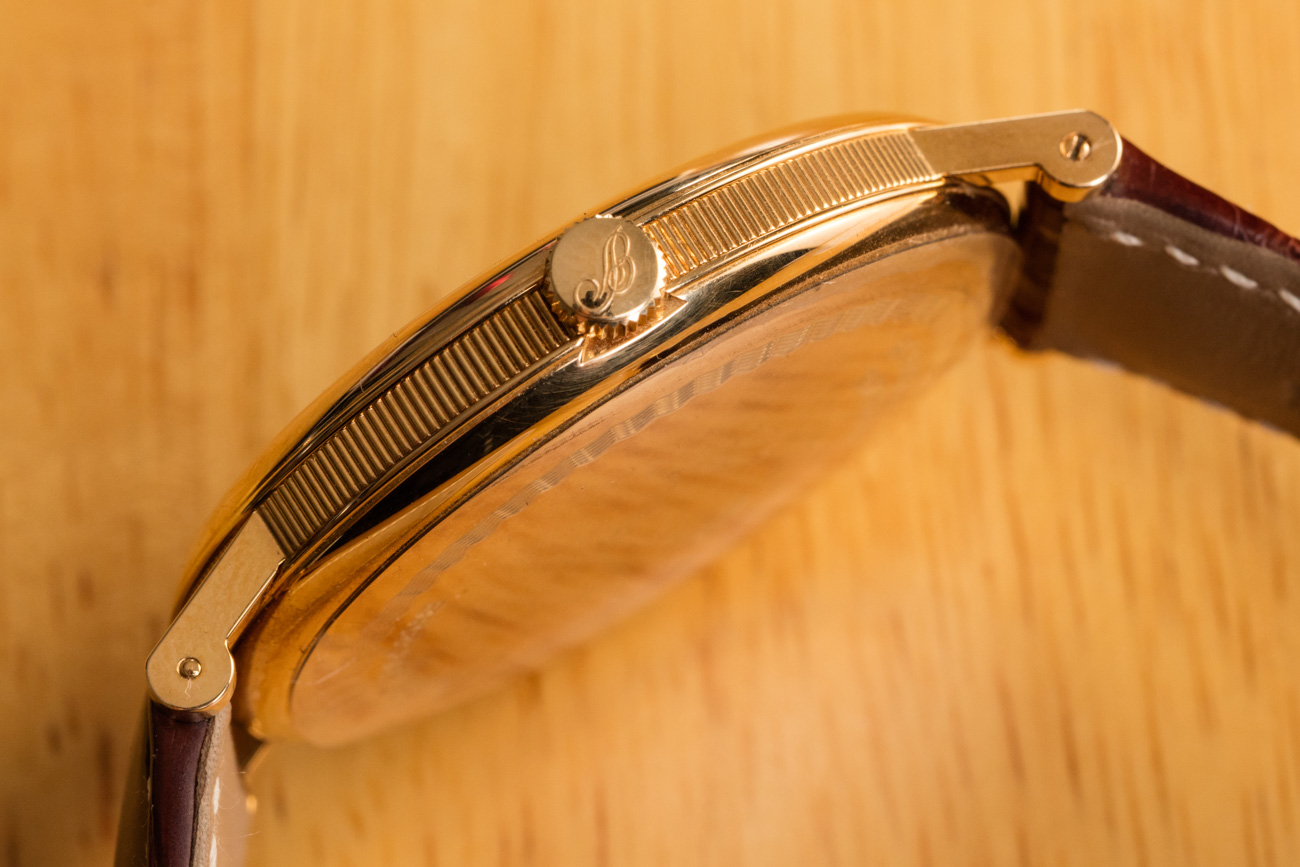
I’d say that the Classique 7147 is a bit more modern in feel while the 5140 has a more traditional look on the wrist. Also note that the Classique 5140 has a solid caseback whereas the 7147 has a sapphire crystal caseback. Both of the watches feature the attractive to look at and reliable in-house made Breguet caliber 502.3 SD automatic movement. This relatively simple 3Hz movement has 45 hours of power reserve. What makes it modern and more reliable is the use of a silicon balance spring – available in at least a few Breguet timepieces. I’ve been in some interesting discussions with collectors over traditional brands like Breguet and use of modern materials in movements like silicon. Much of these discussions end up with the conclusion that “yes, silicon parts were not around in Breguet’s day. However if they were, the benefits over metal that they offer would have likely been enough for Mr. Breguet to use them.” Thus, even though silicon is not a traditional watchmaking material – when asking yourself “what would Breguet himself do?” The answer is typically that he as someone who was also seeking for more performance out of his products would eagerly jumped on the silicon bandwagon if he was around today.
Not all Breguet Classique 5140 (or 7147) watches feature enamel dials. Other models in the collection have in-house guilloche machined dials which offer a different, albeit equally captivating look. Enamel dial will offer the most legibility as well as an elegant looks which is tough to reproduce in lacquer or other manufacturing techniques. Enamel dials begin as baked white-color dials that are printed or painted with enamel paint, and then baked again. It is a form of ceramic. The baking process make the colors permanent, and enamels dials are among the few historic objects whose colors don’t really fade over time. So it is the durability and permanence of the colors and printing on enamel dials which made them popular to begin with. A neat little “hidden” feature in Breguet’s enamel dials is their “secret signature.” Basically it is a secondary Breguet logo on the dial between the main logo and where the hands intersect. This is a vestige of original Breguet watches when things like secret text on dials were done in order to prevent unauthorized copying. Today its just a nice story added to a historic-style timepiece.
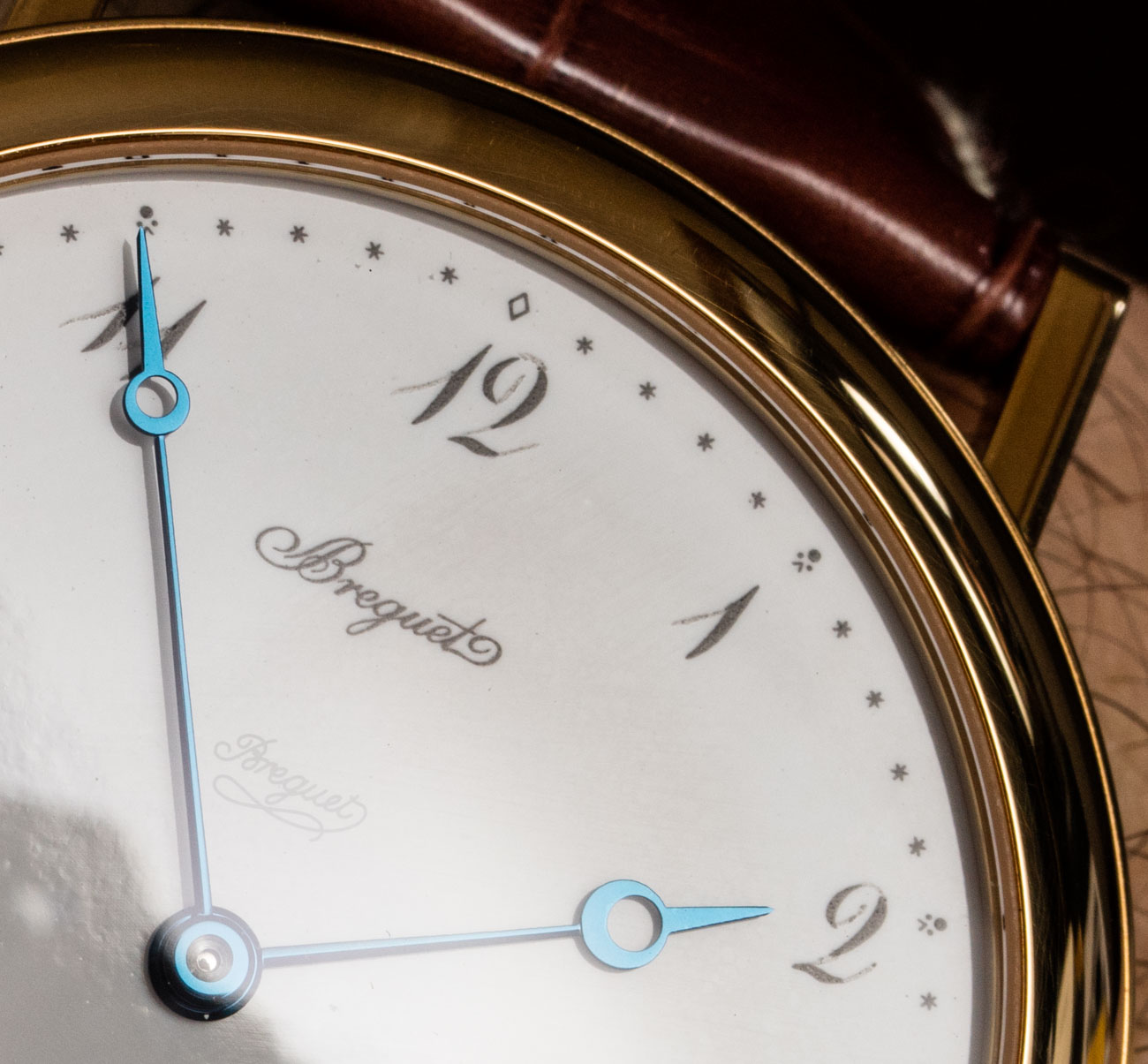
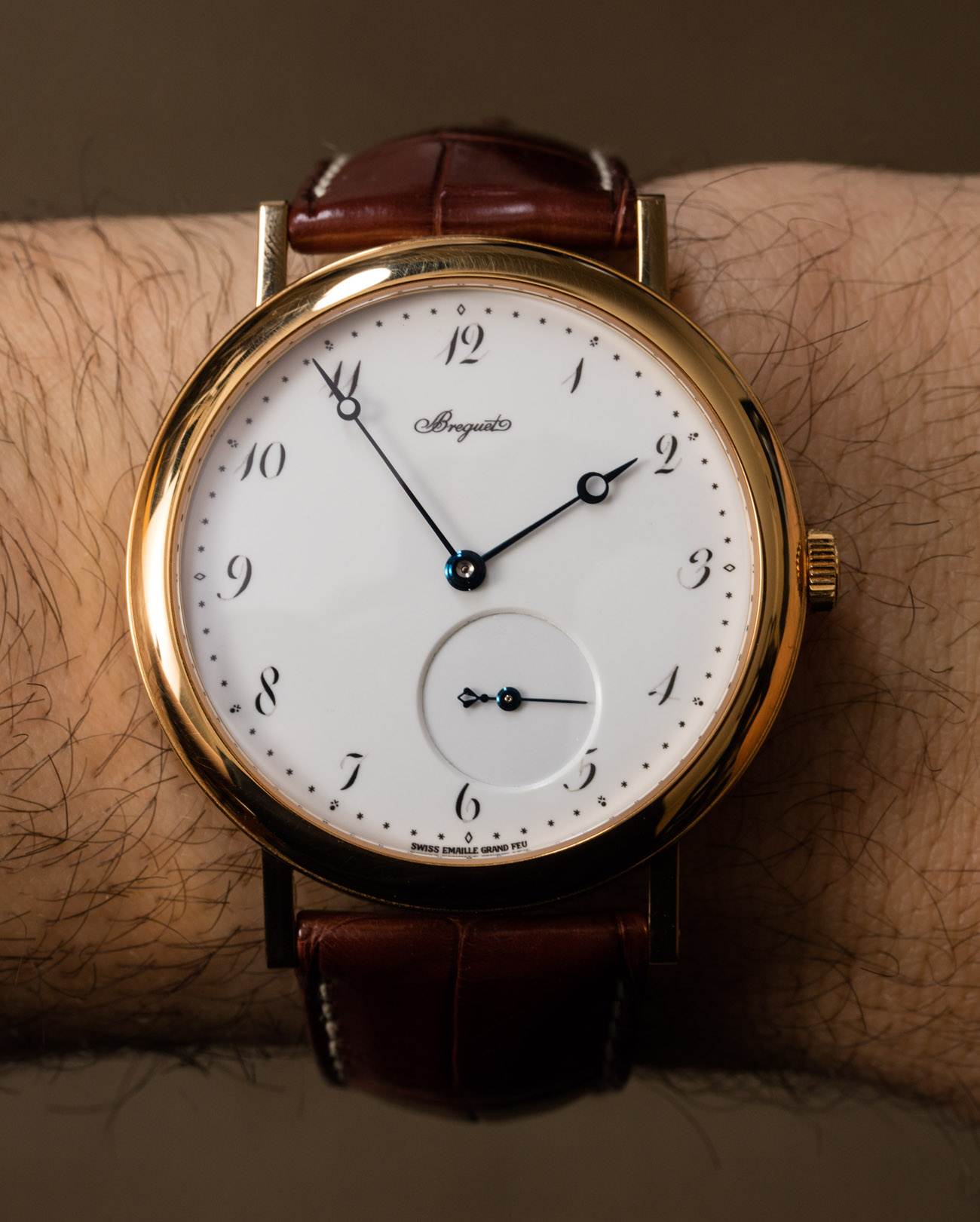
In this case the enamel dial has two levels as the subsidiary seconds dial is both recessed and slightly asymmetric. This latter element if anything is playful and helps give the watch a bit more personality. It also helps prevent having to cut off the 6 o’clock hour marker while having that size of subsidiary dial. It doesn’t bother me that the subsidiary seconds dial has no markers in it, though I do get curious what the dial would like look with little markers in there.
The hour markers themselves are in traditional “Breguet” Arabic numerals matched with pomme-style “Breguet” hands. Detailing on the hands is lovely, and the blued color derived from the baking process always looks eye-pleasing against the white enamel face. The inspiration for the dial is very much based on traditional pocket watches – so much so that element like the Breguet logo are scaled down as though the dial were originally designed to be in a larger size (such as on a pocket watch). One of the things you’ll notice on the Classique 7147 models is that the dial elements (numerals and logo) are increased in size a bit to better match the proportions of a wrist watch. With that said, if I didn’t think about any of this I’d say that the Classique 5140 dial didn’t have any issues with it.
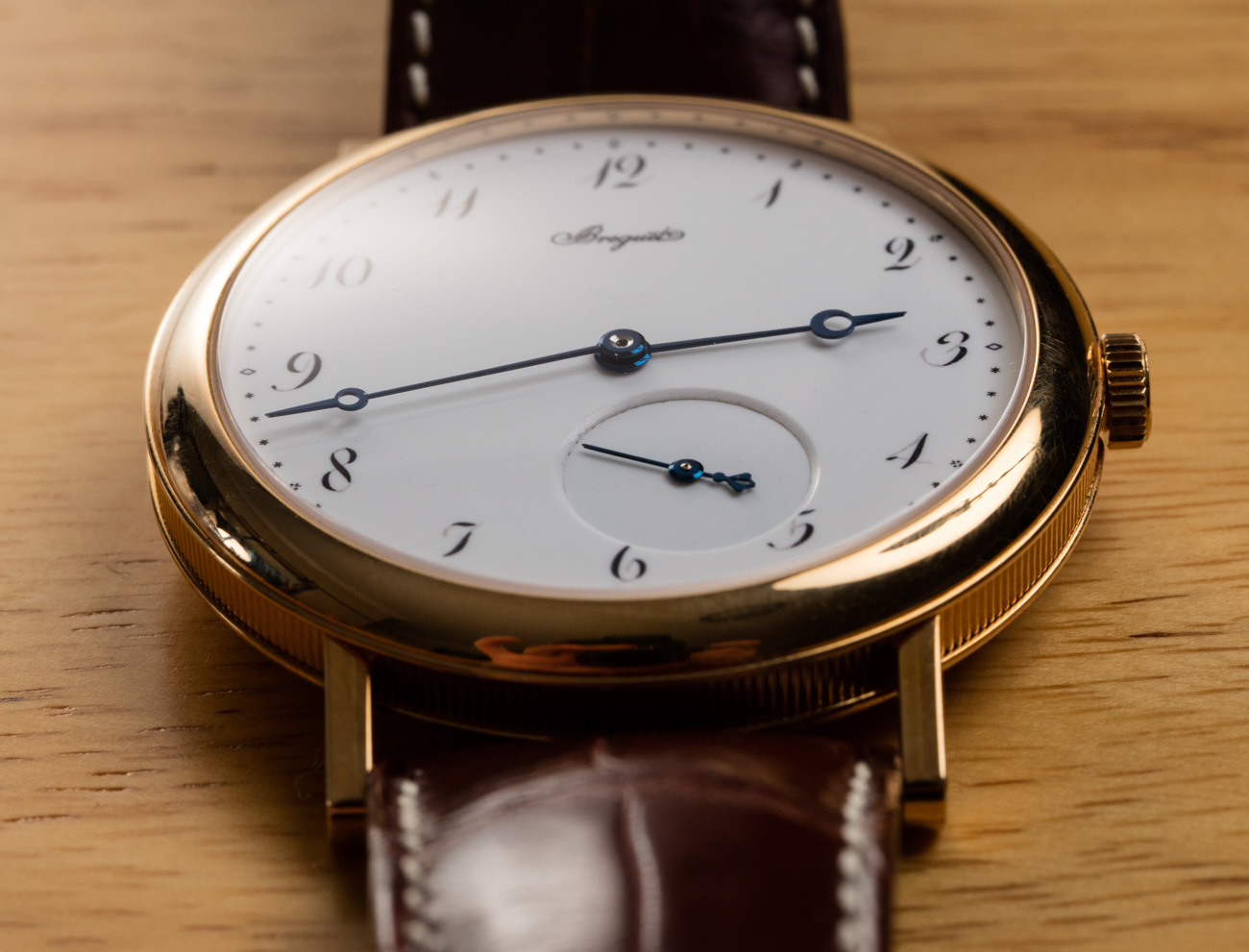
At 40mm wide this is a larger-sized dress watch (though not the largest the may) for Breguet. This is about as small a size as I am personally willing to go. The case is comfortable and the angled lugs do not appear too long for even small to medium-sized wrists. Typical coined-edge decor is on the side of the case, and the caseback is modeled after those on some pocket watches. In summary, while the Classique 5140 wears very well as a wrist watch, its soul apparently still thinks it is part pocket watch. If you are a timepiece history enthusiast like me – sensing this will simply add more welcome character to the overall product wearing experience. Attached to the case is a brown-toned alligator leather strap with matching yellow gold buckle.
When it comes to dress watches I personally prefer something from Breguet over most Patek Philippe, Audemars Piguet, or Vacheron Constantin products. Breguet simply matches my sensibilities more. Breguet doesn’t engage in nearly as much marketing activities as some of those brands do and I don’t think their products get as much “conversation time” with collectors as they deserve. The Breguet Classique 5140 isn’t cheap, but it offers a solid wearing experience, design, and high-end construction quality that I think consumers are looking for at prices like this. Thanks to Rostovsky Watches – a trusted pre-owned watch dealer for loaning this timepiece to aBlogtoWatch. This Classique 5140 reference 5140BA-29-9W6 has a retail price of $18,800 USD. Learn more at Breguet here.

